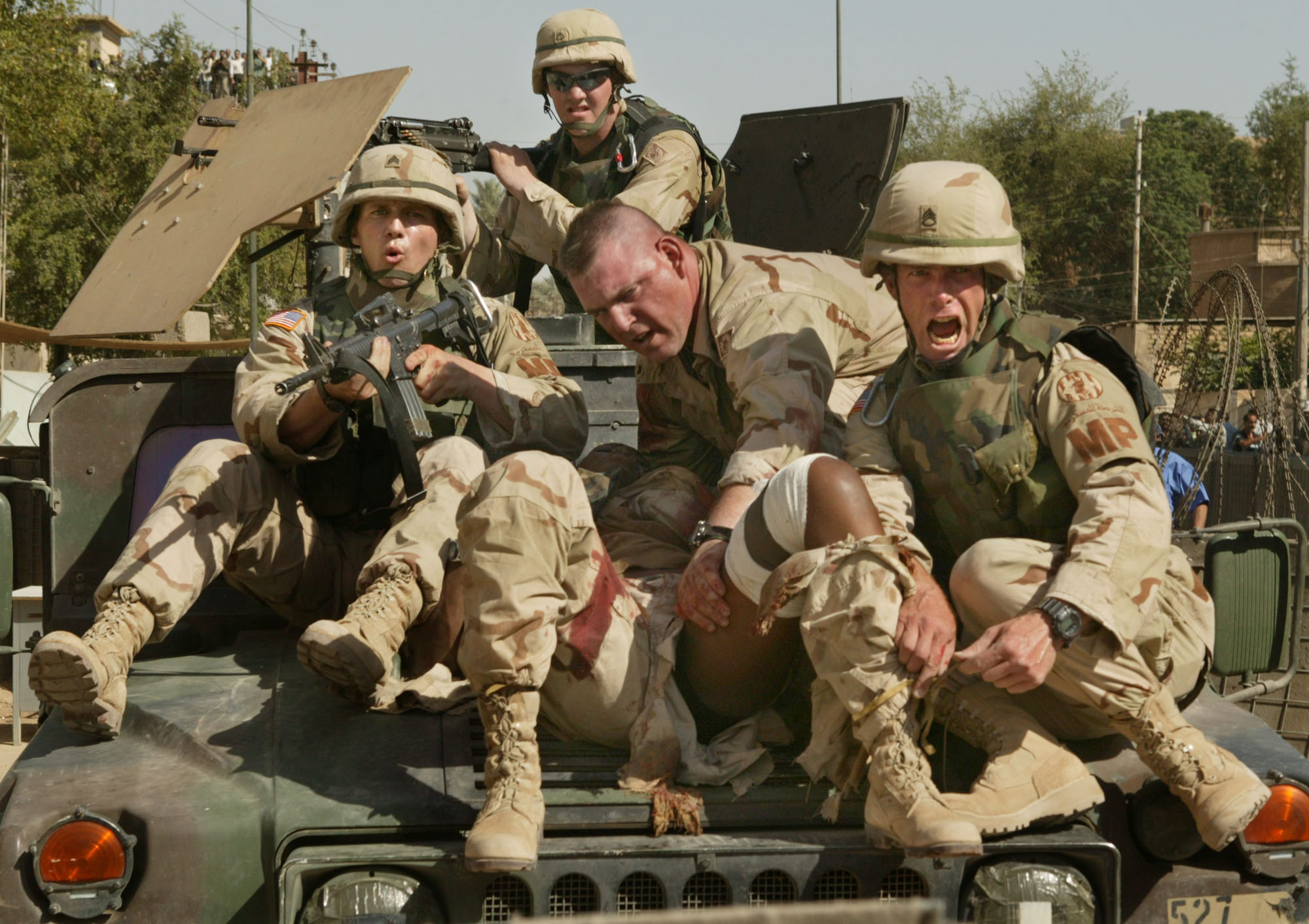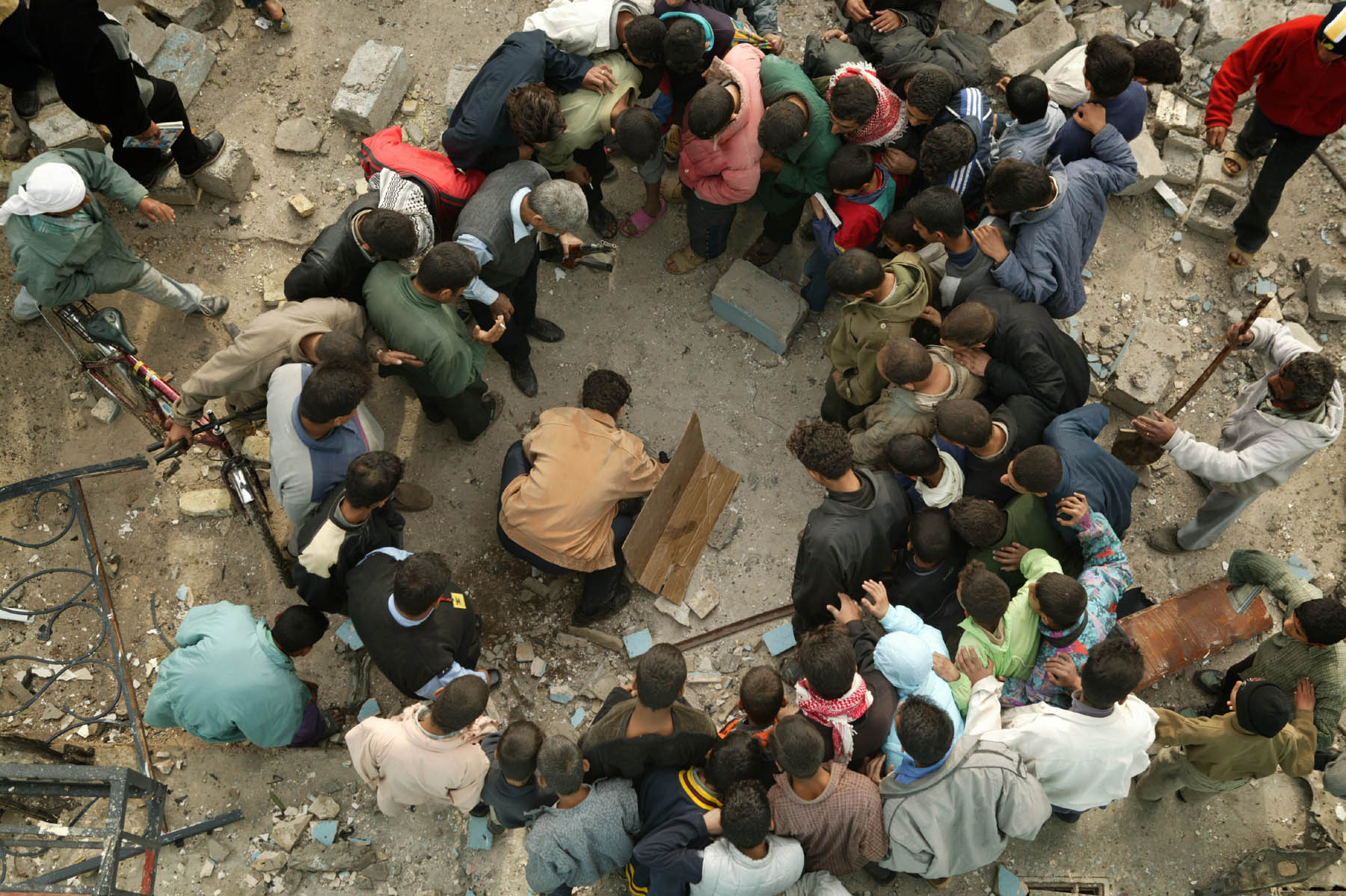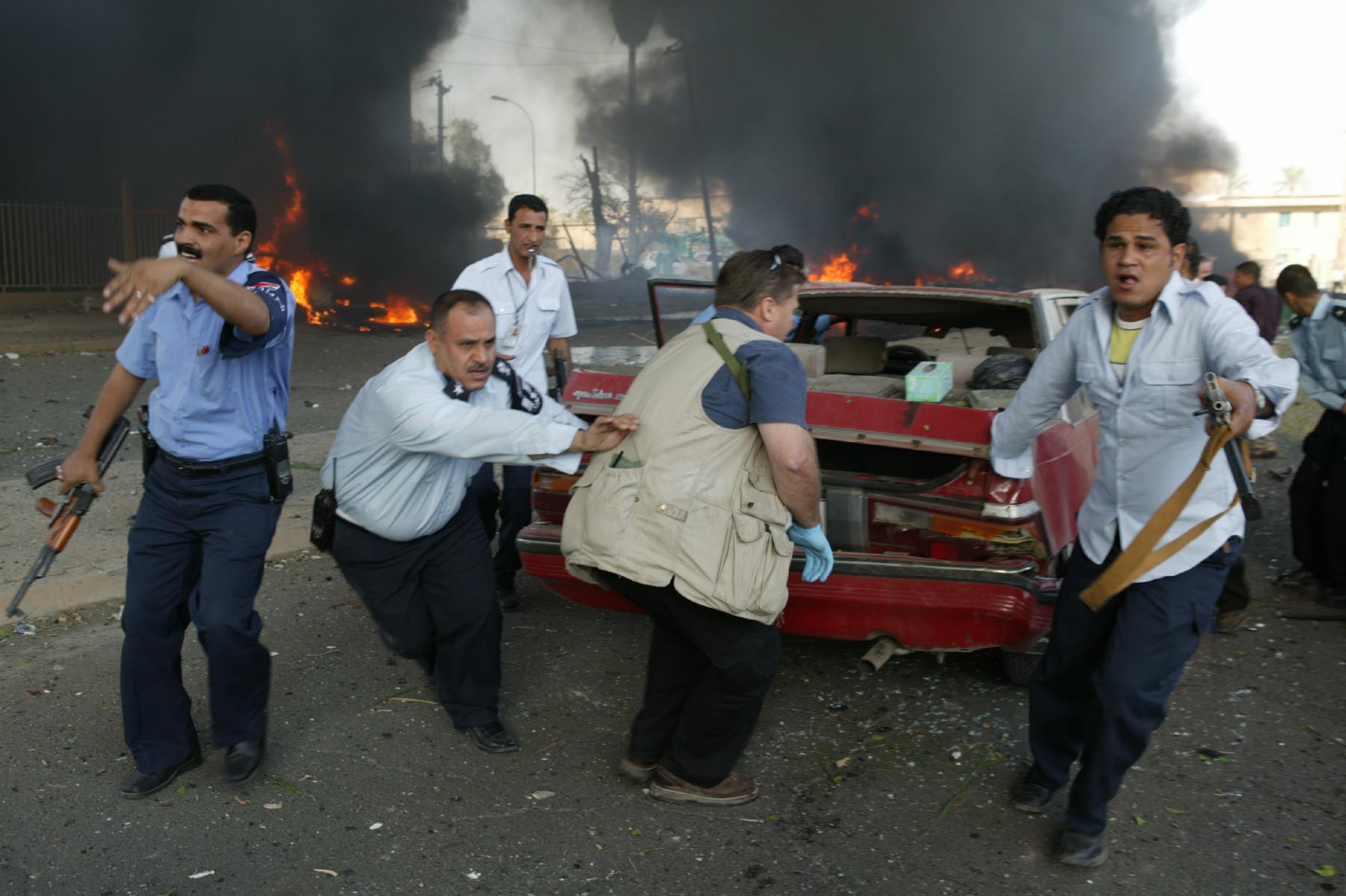Dispelling the myths of war and war photography

Why did you decide to make a book about photojournalists and the Iraq War?
Michael Kamber: I kept going back and forth to Iraq for 8 years between 2003 and 2012. I made the book as an American. I would go back to America and people had no idea what was going on in Iraq. We went into a war that took hundred of thousands of lives and destroyed a country and nobody really seemed to know anything about it. People in the US would know that there had been a car bomb, but they didn't know any of the details; they didn't know what a car bomb looks like because photos had been effectively censored.
It was a very complex war, and I just felt like that there were truths about the war that America probably wasn't able to deal with. I did the book because I had to, because it was ripping me apart, it was eating me out knowing that there was no history that represented what I saw. None of my pictures are in the book, but my reality is in the book through the work that I collected.
I think that there has to be an accurate history of the war and I had seen no accurate history of the war. I mean, I had seen some good stuff – George Packer and John Lee Anderson wrote good books – but they weren't comprehensive; they were narrow and they were about their personal trips. Whereas if you have 40 photographers who covered the Iraq war for a period of 8 years, you have a very broad history. And you also have an intimate history, because a lot of the writers are sitting down in the green zone speaking to diplomats and journalists: but the photographers are on the frontline.

Why did you decide to combine interviews and photographs?
Kamber: There are 39 chapters in the book. Each one is an interview with photos, from three to seven or eight photos per photographer. We focused on powerful photos, but we focused as well on photos that haven't been published or had not been widely published, or maybe were only published in Europe and not in the US.
The interviews are long, and we needed them to give context to the photos. I have also worked as a writer and I think there is too much photography without context. In the interviews, you hear the photographers telling in detail how they were censored by their own editors or censored by the US military or prevented from publishing important photos or just the changes they went through, their experiences, how the media changed. And I think the Iraq War is also crucial to the end of American power in the world.
Why did you put the focus on the personal experience of the photographers?
Kamber: I think it is interesting to me how the photographers changed as human beings. You can see the changes in them and you can hear the changes. They are talking about their marriages, their divorces and the break-ups of their families. They are talking about their alcohol and their drug addictions. I mean they are talking about themselves as human beings, which I think is very interesting.
I also wanted to examine how the production of the media works, the production of how public ideas are created and how a country of 300 million people got behind a war. I mean the media helped to produce support for this war and that is fascinating, especially in the run-up to the war.
If you read Gary Knight's interview, he says that photographers were being told what to go out and photograph. They were being told, "This is a liberation, and we want you to photograph a liberation." But the photographers were saying: "But we are seeing an occupation." And they got the answer "No, it is not an occupation, you go out and photograph the liberation". And so a narrative was being created for the American people.

Can you give an example of this American pro-war narrative?
Kamber: The fall of the Saddam statue is a good example. It is fascinating: it was a very minor event with really just a handful of Iraqis present and it was photographed from certain angles and shown all over the world as the fall and the liberation of Baghdad, as this incredible event that the Iraqi people supported. The square is huge, I worked there, and you could fit thousands of people into it. But there were maybe 30 people there. But if you shoot with a telephoto lens from a certain angle it suddenly looks dramatic. I mean I am not a friend of Noam Chomsky, but you are sort of manufacturing consent.
War photographers are often seen as heroes. Is the book working against this myth, trying to destroy it?
Kamber: To destroy that myth – the one of the dashing war photographer with his scarf, romantically jetting around the world with some beautiful girlfriend – is one of my main goals in life. We need to destroy it; it is just a cliché and it is just awful.
It's also responsible for inviting in and initiating in the next generation of young photographers that are not looking hard and critically enough at these issues because they are interested in the romance of being a war photographer and they are not interested in really digging in to what it means or they are not prepared to deal with the pain and personal destruction that it brings.

Did you ever consider the risk that your book could actually have the opposite effect to what you intended and in fact strengthen the myth of the hero?
Kamber: It is really hard to say. It was my goal to make it unromantic but sometimes, the more unromantic, ugly and drug ridden, dirty and exhausted you make it, there's always a group of young people out there that will think that is even more romantic. And you know if you talk about sleeping on the ground or living alone in a hotel room and being lonely, people might say "Oh my God, that's even more romantic than I thought". So sometimes the harder you try, you have the opposite effect.
I can't deconstruct that because there are two things involved. One is war, which our culture – at least our American culture – just pushes day and night, 24 hours a day as this incredibly romantic thing. And then there is photography, which is also this romantic art form. So you've got war photography, you've got war and photography and you've got these enormous cultural sorts of machines that are romanticising both of these things at the same time.
So now we are going to stand up and try to say this is not romantic? This is tough. And if you look at Magnum, if you look at Robert Capa, if you look at "Visa pour l'image", if you look at the other festivals … I mean this romanticising is going on all the time.
Interview conducted by Felix Koltermann
© Qantara.de 2014
Editor: Aingeal Flanagan/Qantara.de
Kamber, Michael, Photojournalists on War – The Untold Stories from Iraq (University of Texas Press, 2013).
For a photo gallery of Michael Kamber's own Iraq photos, click here.